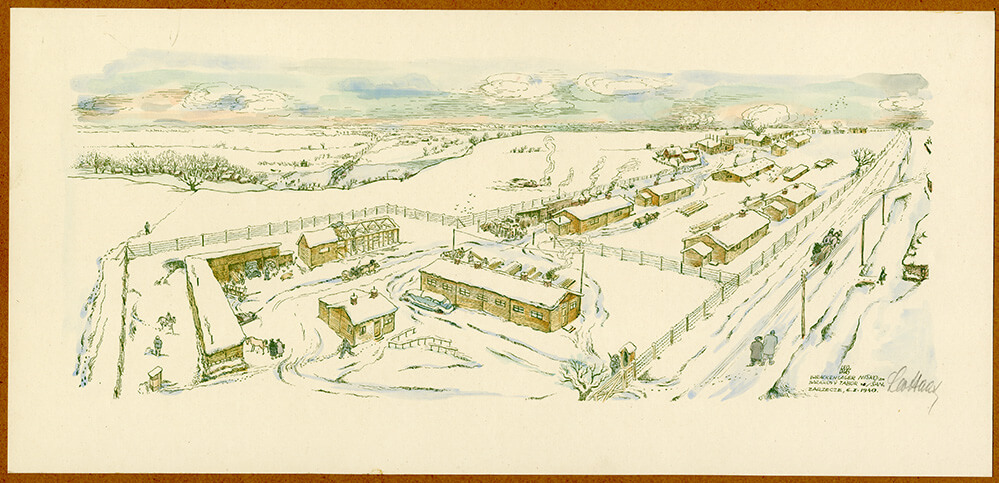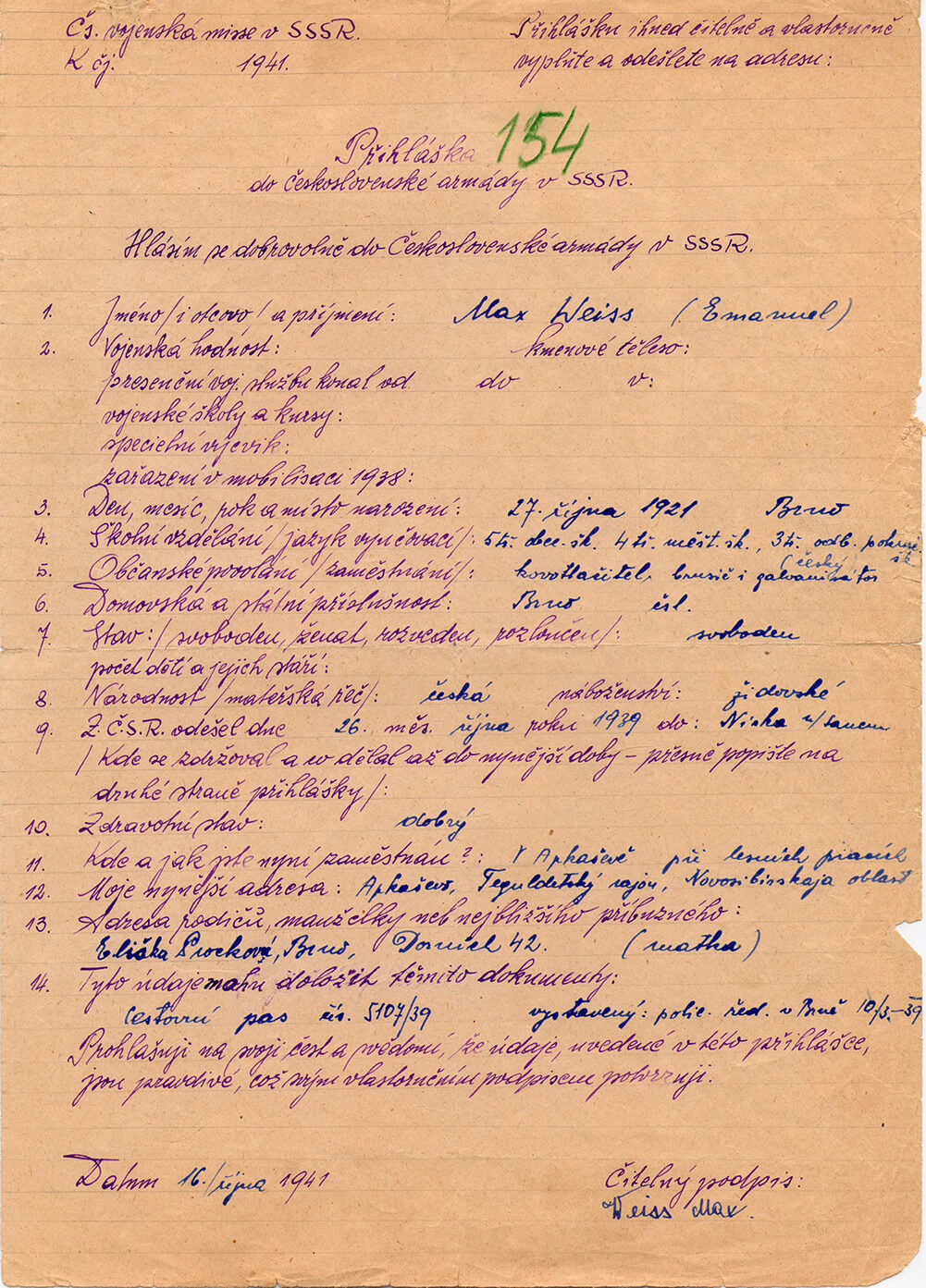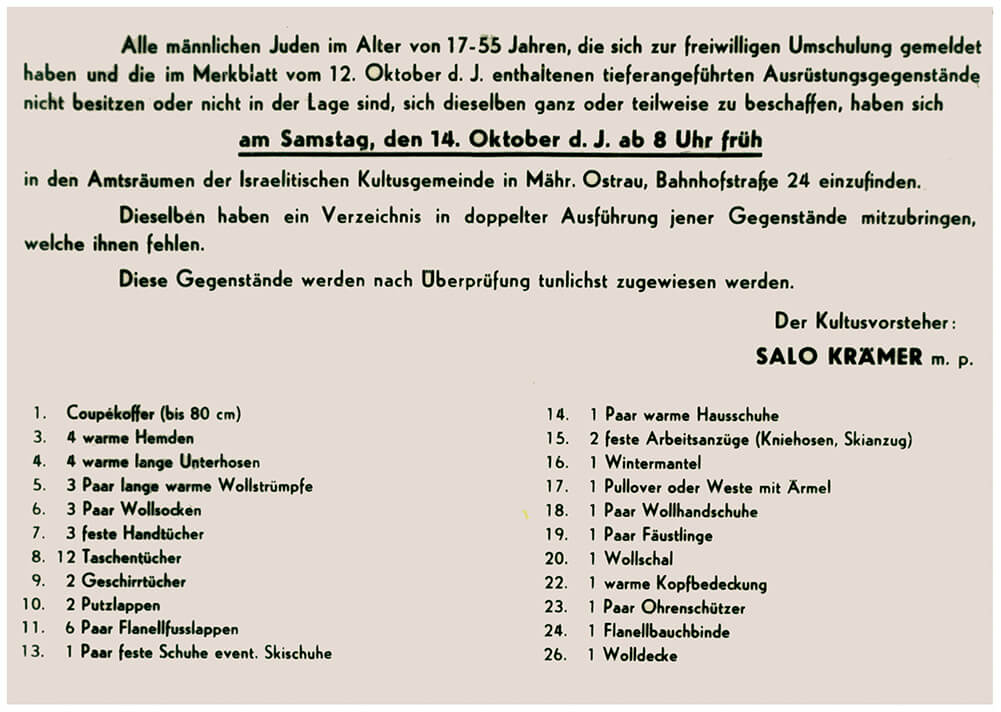Transit camp in Nisko

Prison barracks in the Nisko camp – a drawing by one of the prisoners, Leo Haas.
Jewish Museum in PragueThe purpose of the transports to Nisko, a Polish town on the River San, was to test and develop a model for the subsequent expulsion of Jews from the German-occupied industrial region of Upper Silesia. The operation was co-ordinated by Adolf Eichmann, who personally organized the deportation of Jews from Vienna, Katowice in Poland and Moravská Ostrava in the Protectorate to Nisko. The first deportees were supposed to construct the camp themselves according to their own plans. Jewish firms had to supply building materials and to provide food. On 18 October 1939, about 900 men who had been gathered at the Ostrava Horse Riding School were sent on the first “voluntary” transport to the so-called retraining camp. A second transport, carrying about 400 men, was dispatched a week later, on 26 October 1939. A third train, carrying more than 300 men in freight cars, left Ostrava on 1 November 1939 but was sent to a makeshift camp in Sosnowiec. The prisoners in Nisko were forced to live in the forest before completing construction of their barracks. They were then put to work repairing roads and bridges over the River San. Only those who were needed for the camp’s operation were kept there. SS guards marched the other prisoners to the Reich’s new eastern border with the Soviet Union. Many of the prisoners tried to escape into Soviet territory. In 1942, after a long time on the run, only a few of them managed to join the Czechoslovak Army Unit in the Soviet Union. Other prisoners tried to escape to the West. At the end of March 1940, the SS command in Krakow decided to stop construction of the camp in Nisko and to close it down. The remaining prisoners were allowed to return home, but most of them were subsequently deported to other camps.

